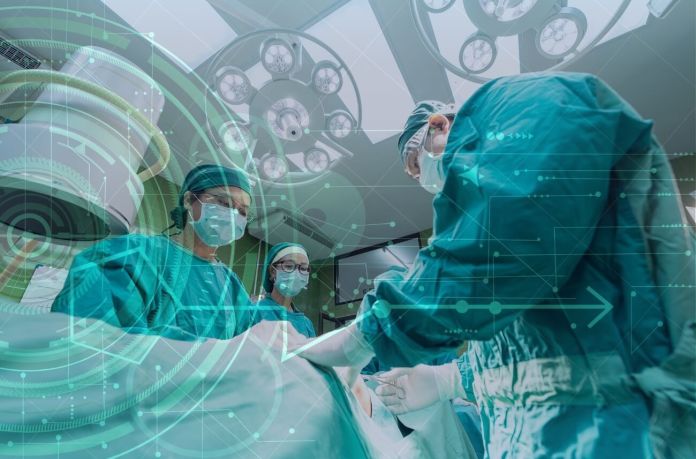
Our ability to find ways to heal our bodies dates back to the stone age, we found many solutions in nature, but in order to extract some of these healing properties, we needed tools. Later on, we invented machines, then software, now, artificial intelligence in medicine is the next step forward.
The development of artificial intelligence in medicine is moving towards a human-less future in diagnosis, treatment, and even surgery.
Large companies are becoming a lot more comfortable collaborating with AI startups in pursuit of improving existing technologies.
The desire to eliminate diagnostic errors, reduce costs, and most importantly, decrease mortality rates connected to wrong or late diagnosis has sparked even more interest and increased investment into AI in medicine.
Lowering costs of healthcare is another area of focus and in need of drastic improvement, to allow even the poorest access to quality healthcare.
According to Forbes, investments into artificial intelligence in medicine will reach $6.6 billion by 2021 with top AI applications expected to release $150 billion worth of savings into healthcare by 2026.
Below is a list of the most recent examples of artificial intelligence in medicine ranging from diagnostics through to surgery, cancer treatment and diagnosis as well as optometrics and dentistry.
Find out how industry and research institutions are working on solving some of the hardest healthcare challenges by using AI in medicine.
Table of Contents
Diagnostics
This diagnostics sector is implementing artificial intelligence in medicine in two areas; traditional diagnostics and predictive diagnostics, the latter getting a lot more attention in recent times.
Predictive diagnosis deals with identifying bio-changes or existing dna markers most likely leading to an undesired diagnostic outcome in the near future.
Predictive diagnosis has also opened another new field where AI in medicine is thriving – preventive medical intervention.
Preventive medical intervention is either a procedure or other treatment, which is implemented as a result of predictive diagnosis.
Today we don’t just want to accurately diagnose a patient, but to see illness coming a long way away and prevent it from ever taking hold.
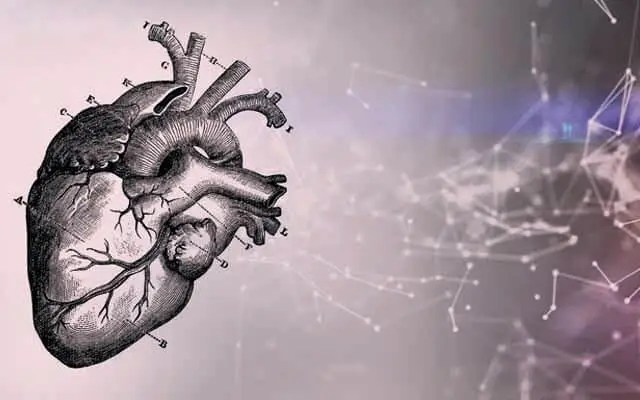
Edwards Lifesciences, a global leader in medtech innovation for heart disease and a pioneer in implementing AI in medicine, has recently joined forces with Bay Labs, an AI medical technology company applying artificial intelligence to cardiovascular imaging.
Their main objective is to enhance existing technology with machine learning capabilities to detect heart disease earlier and more accurately than is currently possible.
They started by feeding the AI with vast amounts of echocardiogram data retrospectively to identify patterns and unlock diagnostic correlations.
These giant steps in artificial intelligence in medicine allow CardioCare (Edwards Lifesciences’ platform) to help hospitals reduce variables in echocardiography and give patients better care.
Whilst death caused by heart disease has decreased by 11% between 2000 and 2015, death caused by Dementia has risen by 123% in the same period.
This is where the need of artificial intelligence in medicine is really crucial for early diagnosis as dementia has higher mortality rates than prostate and breast cancer combined.
A San Francisco Department of Radiology has joined forces with staff from Biomedical Imaging to fight Alzheimer’s with AI they developed using Neuroimaging.
So far, they have achieved an 82% prediction specificity, but with the AI continually learning, this result will improve in the near future.
We love the sun, but when a questionable mole catches our attention, we want to know with absolute certainty whether there’s any cause for concern.
A team with members from the US, France, and Germany created an AI system to diagnose skin cancer has beaten a team of 58 Dermatologists.
The study reported artificial intelligence detecting cancerous spots with an accuracy of 95% against 87% achieved by the specialists.
MORE: AI Can Detect Skin Cancer with 95% Success Rate
MORE – Data Science – 8 Powerful Applications
Drug Discovery
2018 marked a record year for the launch of new pharmaceutical drugs, a 20% increase on the previous record in 1996.
This is clear evidence of an increase of artificial intelligence in medicine and its use by some of the largest pharmaceutical companies to discover new drugs.
This onslaught of new applications has caused the FDA to speed up the approval of AI-related applications according to a recent review.
SEE MORE: Viz.ai an AI Platform for Diagnosing Stroke Obtains FDA Approval
This is good news for anyone suffering from an existing serious condition, offering hope and better solutions in the near future.
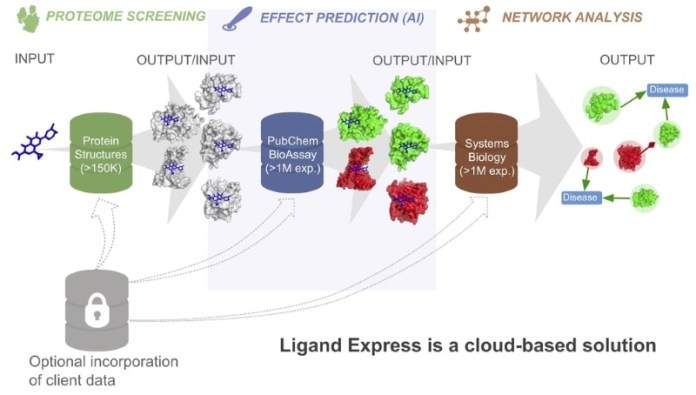
Bayer, has joined Cyclica, creator of the cloud-based platform called Ligand Express, to develop and screen personalized drugs.
A single-target design process, traditionally used in dealing with incurable pathologies has been proven less effective.
The AI-driven platform will be used primarily for multi-targeted drug design in order to break the limits of a traditional single-target design process.
One of the world’s largest pharmaceutical company Novartis, has been experimenting with AI for some time, they published their results last year in Bioinformatics.
They highlighted that the biggest impact of AI in medicine for the purposes of drug discovery is the ability to save time.
The AI learns by scanning thousands of images, once it ‘understands’ the effect of various compounds, it’s ready to carry out analysis and instantly predicts the effect of new mixes of compounds on cells at different doses.
So far, Novartis has achieved 100% accuracy with this process.
A recent study by Belgium based Laboratory for Respiratory Diseases shows AI diagnosis of Lung Disease proved more reliable than lung specialists.
The pulmonary tests generate high volume of numerical data, expressed in patterns hard for a human to read and interpret.
They presented their findings in Paris, at the European Respiratory Society International Congress.
The software is twice as accurate, as experienced pulmonologists and has already been implemented by two hospitals in Belgium.
This is a perfect example of AI in medicine, which is used on a daily basis to improve and speed up diagnosis.
MORE – Computer Vision Applications in 10 Industries
Surgery
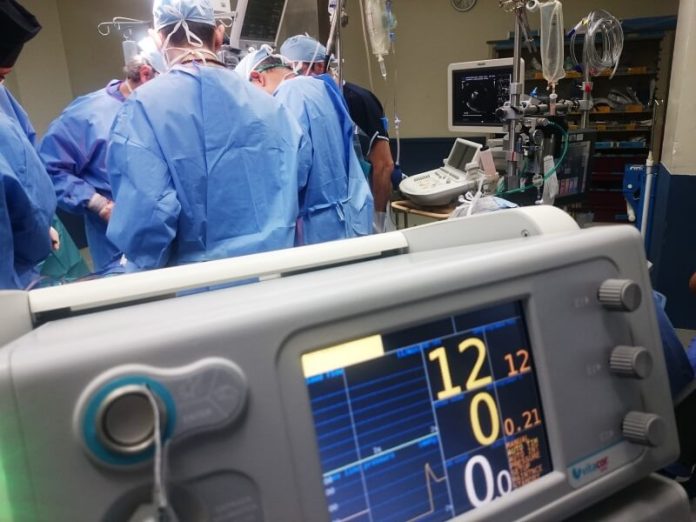
The operating table often means the difference between life and death.
Surgery has come a long way and our fear and pain related to procedures have significantly decreased in the last couple of decades.
The biggest leaps in artificial intelligence in medicine in recent years are happening on the operating table.
Some examples include the use of Virtual Reality (VR), Robotic-Assisted Surgery, and Augmented Reality to name a few.
Human presence has always played a critical role in surgery, but it may be the first area of medicine where it will be replaced with AI.
SEE MORE: Johnson & Johnson Acquires Robotics Company Auris for $3.4B
Borns Medical Robotics is a health-tech company and a pioneer in human-less surgery.
They have developed a robot which can perform with minimal invasive surgery, but that’s not all, the robot is able to do this remotely.
This offers fantastic prospects for those in isolated areas as well as places affected by war to name a few.
Digital Surgery, a medical tech company based in London, has developed artificial intelligence to guide the surgeon through every step of the procedure.
This greatly reduces risk by navigating the surgeon through the many variables affecting every surgery.
The AI adapts to each bodily reaction or external situation in real-time throughout the operation, constantly adjusting the road-map accordingly.
Post-op, Follow-up & Hospital Stay

Nearly all of us will undergo some form of surgery in our lifetime, whether it’s for minor dental work or more serious condition.
Most procedures are successful, but in a small number of cases things go wrong, even if the surgery is a success, complications may develop post-op.
Surgical Site Infection (SSI) occurs on average in 2.3% of cases, based on data collected over a 5 year period, from 30 hospitals based in America, Africa, Asia, and Europe.
The data shows that SSI causes over 8,000 deaths per year in the USA alone.
Here are just a couple of examples of how Artificial Intelligence in medicine is combating this problem.
SEE MORE: Machine Learning to Assist Important Decisions in Sepsis Care
University of Iowa Hospitals and Clinics have reduced infection after surgery by 74% and generated $1.2 million in savings after implementing AI tech into their surgical procedures.
A 3-year pilot was successfully completed in 2016, afterwhich the hospital adopted this new technology.
It works by predicting the likelihood of infection before the surgeon even gets a chance to close the wound.
GE launched a new platform called Edison, it’s composed of a plethora of AI apps aimed at centralizing information and putting it in the hands of hospital staff.
SEE MORE: GE Healthcare & Vanderbilt Collaborate on AI-Powered Precision Medicine
These apps work on various devices and hospital equipment and enable clinicians to make quicker, well-informed decisions.
This translates into better care for the patients, smoother communication across the hospital and, fewer errors.
Some of the more clever applications can even update the operating system of ‘older’ equipment which will extend its life, which means savings in new equipment costs for the hospital.
Implants

Implants and artificial intelligence in medicine are a match made in heaven, solving the hardest of challenges and where we get the closest to science-fiction.
From “talking” to our brain’s neuroconnections or monitoring our biochemistry, to collecting and transferring our biometrics in ‘real time’, this is where AI in medicine really shines and shows its full potential.
Alzheimer’s disease is getting attention from many sides in order to combat this debilitating condition.
Recently, new research by the University of Pennsylvania has successfully carried out tests on 25 epilepsy patients to improve memory.
The university utilized the 200 electrodes already implanted on these patients’ heads to go through a number of simulations.
They were assigned tasks engaging memory, whilst the AI analyzed the data from the impulses to learn how a brain retrieves that memory.
Those supported by artificial intelligence performed 15% higher than other subjects involved in the study.
Imperial College London is using AI to design a treatment strategy for kidney failure patients.
This disease kills approximately 44,000 people a year in the UK alone.
The AI ‘studied’ over 100,000 past cases, including all the decisions made by relevant doctors, to develop ideal treatment strategies for new patients.
The findings reveal that the artificial intelligence consistently outperformed the specialists by making better treatment suggestions.
A study conducted by the Chinese University of Hong Kong and Ann & Robert H. Lurie Children’s Hospital of Chicago to predict future speech learning capacities in deaf children.
During the study, the artificial intelligence ‘studied’ brain scans of children who received a cochlear implant.
The research shows how the AI used this information to enhance its ‘understanding’ of the learning section of the brain.
Speech therapists now use this data is to improve methods, which help deaf children learn how to speak.
Prosthetics
Artificial intelligence in medicine is particularly evident in prosthetics, we don’t exactly know when it was first used, but the earliest evidence is a 4th century BC vase, showing a man with a wooden leg.
History shows that people use prosthetics to not only perform physical tasks, but also to improve their image.
Technology has come a long way since wooden sticks and with AI in prosthetics, it’s now possible to achieve both; improve image and increase mobility.
Imperial College London joined with the University of Gottingen to create a self-learning bionic hand earlier this year.
5 patients have been fitted with the hand so far with fantastic results.
The good news is that the more the hand is used, its movements will improve and become even smoother.
With 300-500 daily amputations in the US alone, this is fantastic news for sufferers of limb loss.
A collaboration between three universities in Arizona has resulted in AI technology which reduces the process of new knee prosthetic adjustment from hours to just 10 min.
Traditionally, the practitioner had to go through a step-by-step process by adjusting 12 control parameters manually.
Now, the AI-driven system can make all 12 adjustments in one go, ready for the patient to take the new limb out for a test drive.
Duke University in North Carolina is pioneering research to fuse electrical signals produced by neurons in the brain with electronics.
This research is aimed at a smooth transition between the brain and all types of prosthetics, beyond our natural anatomy.
The study is using this new technology to see how the brain can move objects, and non-human limbs attached to arms to be used in performing different types of work or sports.
Anna Giuffria, who was born without an arm said she would like to use this to get a tentacle instead of a hand attachment for her prosthetic just for fun.
This is one of the most amazing examples of AI in medicine and opens up a pandora’s box of implications for the future of humankind.
Optometry
Using artificial intelligence in medicine is recently taking huge leaps by using optometry to also diagnose many non-optometric diseases.
As you will see in examples below, industry leaders such as Google and Microsoft among many others, are increasing AI research in optometry.
Like many other sectors, many of these corporations are partnering with other organizations such as tech startups and universities.
This degree of collaboration involving AI in medicine between institutions is unprecedented, but the collaboration involves more than just inter-human exchange.
We have entered the era of human-AI collaboration aiming to advance technology and improve targeted results.

Moorfields Eye Hospital used Google’s DeepMind (in London) to carry out an experiment recently involving 1,000 patients.
Experienced optometrists were pitted against AI to categorize optical scans into urgent, semi-urgent, routine, and observation only.
With only a 5.5% error rate, the AI performed on the same level as 2 of the world’s leading retina specialists.
Their technology can identify up to 50 different eye diseases with utmost accuracy by performing a 3D scan of the back of the eye.
Shiley Eye Institute at UC San Diego Health has developed a screening tool to diagnose eye diseases and pneumonia earlier with treatment commencing much sooner.
University of California San Diego School of Medicine, as well as colleagues from Texas, Germany, and China, collaborated together to develop this tech.
The diseases they target are common but many often end up causing blindness, they are also extremely hard to identify by the naked eye.
The AI scans and instantly compares against a database of millions of images to pick up on subtle changes indicating a presence of the disease.
Artificial intelligence in medicine is making huge waves throughout the visual recognition technology in every area of healthcare.
Approximately 8% of the population is affected by diabetes, a growing global epidemic, which is predicted to almost double in developing countries by 2025.
With an average approval time of 12 years, the FDA only took 85 days to approve IDx-DR, which demonstrates the sense of urgency around diabetes.
Diabetic retinopathy is detected at a much earlier stage with IDx-DR which is operated solely by artificial intelligence.
Since FDA approval two institutions in Iowa have already implemented the system in their clinics.
READ MORE – DeepMind: Behind the Scenes at a Trailblazing AI Startup
Life-threatening & Terminal Diseases
Terminal disease diagnosis is one of the worst news, it’s hard to take even for the toughest of characters.
The increase of new FDA approved drugs offers new hope, but the implementation of AI in medicine, particularly in diagnosis and treatment of more serious conditions increases the chances of prolonging, or at the very least improving, the life of those affected.
Patients with terminal illness often ask their doctor how long they have left in order to make final plans and put their affairs in order.
This is one of the hardest estimates to make and often doctors can be off by years.
Stanford Health Care decided to tackle this challenge and developed a predictive analysis tool to reduce estimate errors.
The AI identifies patients who are most likely to die within 3 to 12 months.
This is a real tangible example of how artificial intelligence in medicine can help people.
It’s not exactly pointing to the exact day, but it gives the patient and the ones close to them a more accurate timeframe to make final preparations.
According to researchers at Johns Hopkins, AI is able to diagnose ⅓ of pancreatic cancers as much as 4 to 12 months sooner.
With an average survival rate as low as 9% after a five year period, early detection is key to increasing this statistic.
Pancreatic cancer can be diagnosed with AI, by teaching it to ‘spot’ the tiniest of changes in tissue.
Johns Hopkins has ideal conditions to develop this system as they have vast volumes of data and two supercomputers to accommodate the required research.
The world would be a different place if we were able to predict life-threatening conditions years before they occur.
A research team at Adelaide University lead by Professor Lyle Palmer is attempting to make this a reality.
Breast cancer diagnosis is one of the areas they are trying to improve.
Statistics reveal that about 5% of healthy women are required to come back for further screening due to current limitations in the identification of affected cells.
The AI they developed, recently scanned vast numbers of mammograms provided by BreastScreen SA to help improve diagnosis.
Some of the best examples of AI in medicine is where life-threatening conditions are identified before they have a chance to occur.
NX Prenatal, a molecular diagnostic company has designed (patent pending) NeXosome to identify life-threatening events for those who haven’t even had a chance to live yet.
They have piloted a study recently involving 261 pregnant women and 3 hospitals to identify the likelihood of preterm delivery.
The platform uses AI to scan the biomarkers of pregnant women as early as the first trimester.
During the pilot, the platform correctly predicted preterm delivering patients with 87% accuracy.
University of Surrey has developed a new AI to help treat cancer by predicting patients’ symptoms and their severity.
The pilot is a first of its kind and can reliably predict the three most common symptoms experienced by cancer patients – depression, anxiety, and lack of quality sleep.
This allows doctors to identify patients with the highest probability of developing these symptoms and enables them to implement an early intervention.
READ MORE: RPA – 10 Powerful Examples in Enterprise
Dentistry
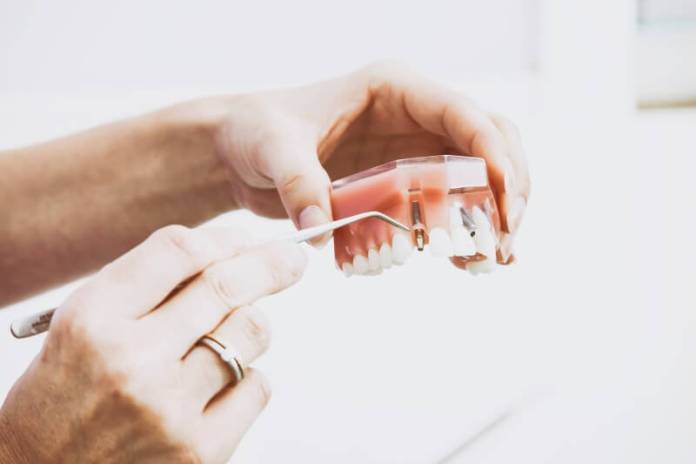
Can you imagine a world where people do not tremble at the thought of a dentist’s chair?
Based on the rise of artificial intelligence in medicine that reality may not be too far away.
AI was used to identify ideal dental implant placement in a pilot study published in National Center for Biotechnology Information.
Seoul National University Bundang Hospital carried out the study over a year involving 198 patients with 667 implants.
Whenever restorative dental work is required it’s crucial to identify an ideal position for implant placement.
The location for an implant needs to be identified whether it is implanted at the same time as the restorative work or later on in the patient’s life.
The ideal location is crucial in cases where an implant needs to be removed in order to accommodate prosthetic elements.
Traditionally, without the identification of such location, the implementation of new prosthetic elements often leads to undesirable outcomes in terms of biomechanics as well as aesthetics.
By implementing the new technology used in the pilot, these negative outcomes can now be avoided.
Many of us will end up needing a dental crown at some stage in our life.
Currently, crowns are designed using traditional technology such as CAD/CAM software from a library of limited crown templates.
This doesn’t always fit well on a patient due to the vast variety of teeth shapes and sizes.
Glidewell Laboratories is a pioneer in using AI to design and produce perfectly matched crowns and adds each new design to the existing library.
A study published recently on Sciencedirect involved 3,000 radiographic scans performed by AI to identify dental caries otherwise known as tooth decay.
Similar technology is used by Denti.AI to identify 30% more pathologies and reduce time traditionally required for diagnosis to just 4 seconds.
Summary
Healthcare and Medicine extend to many areas, but they can be divided into three groups, prevention, diagnosis, and treatment.
Some prevention methods have been practiced since the beginning of time and are more primitive in nature such as herbal medicine or meditation.
Others, more traditional forms widely accepted and encouraged by medical professionals such as exercise, good diet, and hygiene.
Regardless of which form we choose, it’s usually driven by our desire to improve our health, lengthen our lives, and enhance our cognitive abilities.
Diagnostics started out as a guessing game, involving a lot of experimentation on humans, then animals.
It’s an area riddled with errors, even to this day misdiagnosis is responsible for 40,000 to 80,000 deaths a year in the US alone.
The treatment has also come a long way with pharmaceutical companies racing to offer us the next best drug.
Other methods including tech devices, machines, physiotherapy among others, have all evolved and are continually advanced to improve or heal our varied conditions.
The vast amounts of data collected from the time humankind started to document its progress is the one thing these three groups have in common.
This data is now driving an explosion of AI in medicine, evident in all these three areas.
The AI “movement” has put the healthcare sector in a collaborative mood not seen before, large corporations are teaming up with startups and the education establishment, with even the most prestigious universities joining in.
As with all new tech, there is no shortage of people trying to warn us about the dangers of AI, but for the most part, the future looks bright.
It’s exciting to think what the next big breakthrough will be, are we going to live longer, will we be able to cure or prevent cancer? We’ll just have to wait and see.
Images: Flickr Unsplash Pixabay Wiki & Others



















